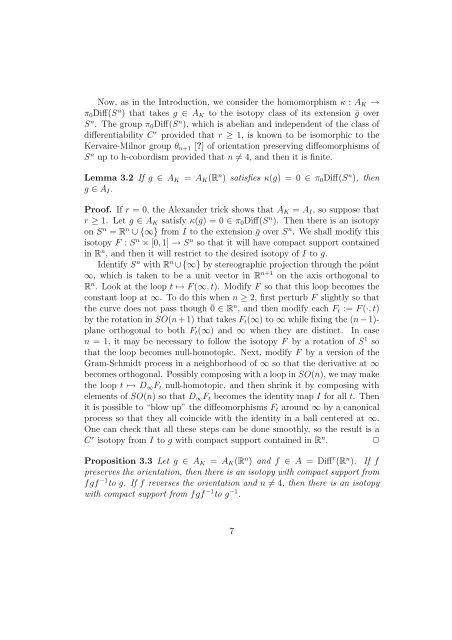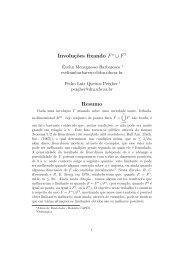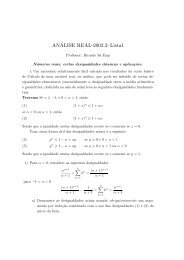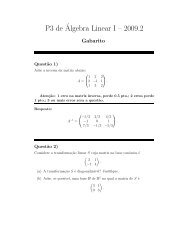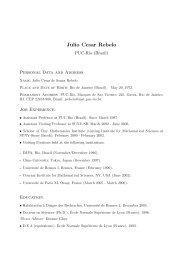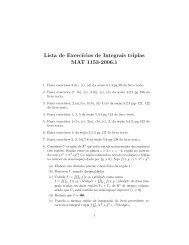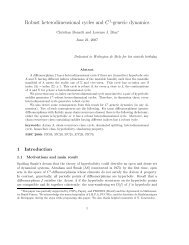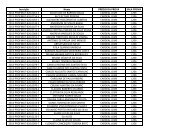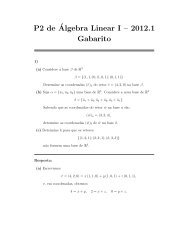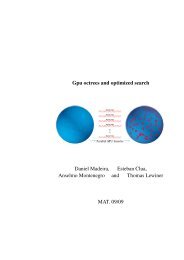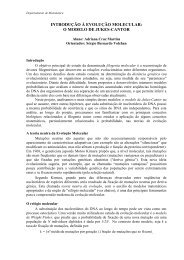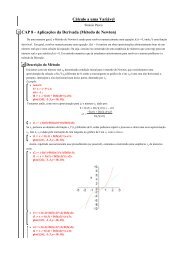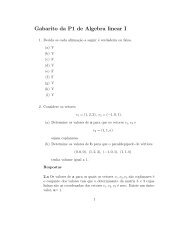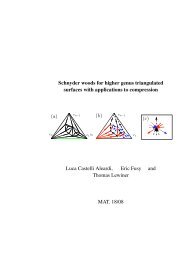NORMAL SUBGROUPS OF DIFFEOMORPHISM AND ...
NORMAL SUBGROUPS OF DIFFEOMORPHISM AND ...
NORMAL SUBGROUPS OF DIFFEOMORPHISM AND ...
Create successful ePaper yourself
Turn your PDF publications into a flip-book with our unique Google optimized e-Paper software.
Now, as in the Introduction, we consider the homomorphism κ : A K →<br />
π 0 Diff(S n ) that takes g ∈ A K to the isotopy class of its extension ḡ over<br />
S n . The group π 0 Diff(S n ), which is abelian and independent of the class of<br />
differentiability C r provided that r ≥ 1, is known to be isomorphic to the<br />
Kervaire-Milnor group θ n+1 [?] of orientation preserving diffeomorphisms of<br />
S n up to h-cobordism provided that n ≠ 4, and then it is finite.<br />
Lemma 3.2 If g ∈ A K<br />
g ∈ A I .<br />
= A K (R n ) satisfies κ(g) = 0 ∈ π 0 Diff(S n ), then<br />
Proof. If r = 0, the Alexander trick shows that A K = A I , so suppose that<br />
r ≥ 1. Let g ∈ A K satisfy κ(g) = 0 ∈ π 0 Diff(S n ). Then there is an isotopy<br />
on S n = R n ∪ {∞} from I to the extension ḡ over S n . We shall modify this<br />
isotopy F : S n × [0, 1] → S n so that it will have compact support contained<br />
in R n , and then it will restrict to the desired isotopy of I to g.<br />
Identify S n with R n ∪ {∞} by stereographic projection through the point<br />
∞, which is taken to be a unit vector in R n+1 on the axis orthogonal to<br />
R n . Look at the loop t ↦→ F (∞, t). Modify F so that this loop becomes the<br />
constant loop at ∞. To do this when n ≥ 2, first perturb F slightly so that<br />
the curve does not pass though ¯0 ∈ R n , and then modify each F t := F (·, t)<br />
by the rotation in SO(n + 1) that takes F t (∞) to ∞ while fixing the (n − 1)-<br />
plane orthogonal to both F t (∞) and ∞ when they are distinct. In case<br />
n = 1, it may be necessary to follow the isotopy F by a rotation of S 1 so<br />
that the loop becomes null-homotopic. Next, modify F by a version of the<br />
Gram-Schmidt process in a neighborhood of ∞ so that the derivative at ∞<br />
becomes orthogonal. Possibly composing with a loop in SO(n), we may make<br />
the loop t ↦→ D ∞ F t null-homotopic, and then shrink it by composing with<br />
elements of SO(n) so that D ∞ F t becomes the identity map I for all t. Then<br />
it is possible to “blow up” the diffeomorphisms F t around ∞ by a canonical<br />
process so that they all coincide with the identity in a ball centered at ∞.<br />
One can check that all these steps can be done smoothly, so the result is a<br />
C r isotopy from I to g with compact support contained in R n . ✷<br />
Proposition 3.3 Let g ∈ A K = A K (R n ) and f ∈ A = Diff r (R n ). If f<br />
preserves the orientation, then there is an isotopy with compact support from<br />
fgf −1 to g. If f reverses the orientation and n ≠ 4, then there is an isotopy<br />
with compact support from fgf −1 to g −1 .<br />
7


